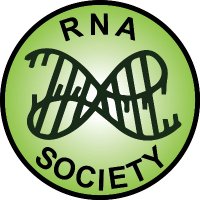
RNA
@rnajournal
The official journal of the RNA Society. Featuring cutting edge research in RNA Biology, biochemistry, genetics, cell biology, structural biology and genomics
ID: 407141780
https://rnajournal.cshlp.org/ 07-11-2011 17:57:47
1,1K Tweet
6,6K Takipçi
537 Takip Edilen











🎉 The 30th #RNAMeeting is officially underway in San Diego! ☀️ We’re really kicking off the week with the Jr RNA Scientists, beach balls, good vibes, and exciting activities ahead! 🧬🏖️ Stay tuned for career panels, networking, and more! #RNA25 #ScienceWithStyle The RNA Society





SMDesigner automates the generation of mutations to assess predicted secondary structures and functions of conserved RNA structures based on sequence alignments. #ncRNA #RNA structure Institut national de la recherche scientifique bit.ly/3Fl7yet





What role does the sarcin-ricin loop (SRL) play in 50S subunit biogenesis? Our data suggest that one or more SRL-dependent GTPases are needed for dissociation of assembly factors during the process. #SarcinRicinLoop #Ribosome_biogenesis #RNA OSU Center for RNA Biology bit.ly/3F5QjOj











![RNA (@rnajournal) on Twitter photo The affinity of [4Fe-4S]-dependent tRNA thiolases for tRNA does not depend on the presence of the cluster bit.ly/4lqVKaJ The affinity of [4Fe-4S]-dependent tRNA thiolases for tRNA does not depend on the presence of the cluster bit.ly/4lqVKaJ](https://pbs.twimg.com/media/Gr-Si9oX0AAoRsF.jpg)






